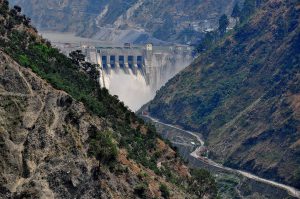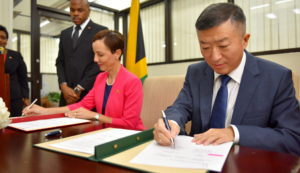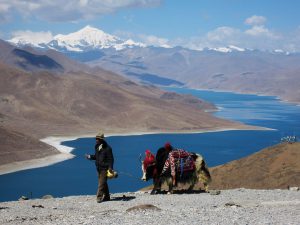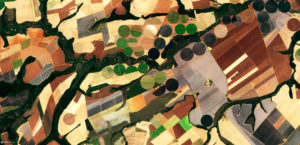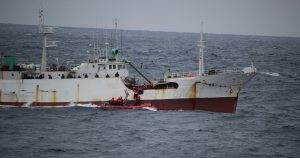Local myths about the use of their body parts, as well as an international poaching network feeding ‘traditional’ Chinese practices, have put Indian softshell turtles in peril. These softshell turtles, which get their name due to lack of scales on their outer shell or carapaces, are found in lakes and ponds as well as in the river systems of the Indus and Ganga drainages across India, Pakistan and Bangladesh. They are nature’s little helpers in keeping the rivers and waterbodies clean, breaking down rotting organic matter in lakes, ponds and rivers including dead bodies of humans and animals. Unfortunately, a brisk trade in their body parts means they are disappearing from the ecosystems where they were once familiar.
Turtle poaching
The international illegal trade in trafficked turtles is deeply established, and a smuggler can get thousands of dollars for a few turtles. One driver is the pet trade. Given their peaceable demeanour, and often beautiful shells, turtles are highly sought after pets in developed countries. A second driver, in Asia, is the lure of traditional Chinese medicine, which is dependent on specific body parts of specific animals. The turtle, given its longevity, is considered special, and thus its parts, expensive. Both of these forms of trade, as well as poaching for eating by local people, have led to the decline in population of softshell turtles in India.

![Turtle Survival Alliance rescue team member Apurva Bandal provides treatment to a rescued lissemys punctata [image by: Arunima Singh/TSA]](https://dialogue.earth/content/uploads/2019/04/TSA-rescue-team-member-Apurva-Bandal-providing-treatment-to-rescued-lissemys-punctata_Arunima-Singh_TSA-1.jpg)
The disappearing turtles
Out of 28 species of freshwater turtles and tortoises in India, 15 are found in the Indo-Gangetic belt, making it one of the five turtle priority regions in India. (The other four are: Assam and the Brahmaputra region, the Western Ghats in Peninsular India, Orrisa & West Bengal in Eastern India, and the terai region along the foothills of the Himalayas). The dangers of poaching and habitat destruction are so high that 17 freshwater turtle species are facing threats in the country. Ten of the species under threat are endemic to the Indo-Gangetic plains.
“Earlier there used to be many turtles in the river but now you [can] find one or two only,” said Vishwanath Haldar, a fisherman at Ramghat, located on the banks of river Yamuna in Delhi, who migrated from West Bengal 30 years ago. He used local terms such as “barah paon” (12 claws) and “kaath” (wood) to describe existing species in the slightly clearer stretch of Yamuna near Delhi. He was likely referring to the Indian softshell turtle (nilssonia gangetica) and the Indian flapshell turtle (lissemys punctata), two species of softshell turtles which are commonly seen in Indo-Gangetic plains but vanishing rapidly due to human exploitation.
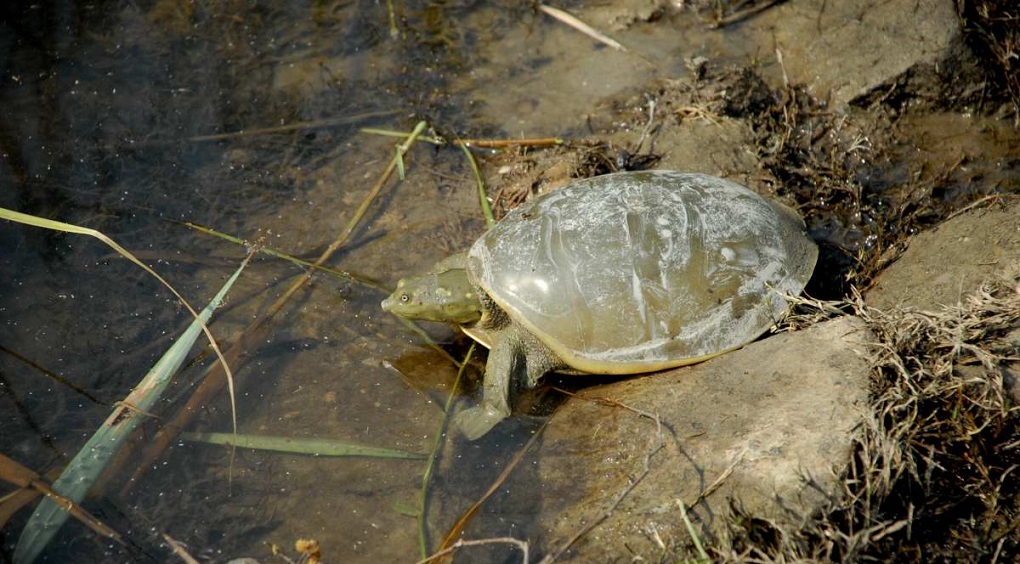
Both the fishermen stated that they never catch turtles, which could be believable, given that they fish on highly polluted stretches of Yamuna; too polluted to find turtles easily. But, when these fishermen said that the entire fishing community of the Ganga river basin never harms any turtle and releases them back into the water if caught in nets, they were clearly not sticking to facts. The local communities around the Ganga have been responsible for poaching thousands of turtles every year, some for local consumption, but much of it feeding a burgeoning illicit network of smugglers for overseas trade.
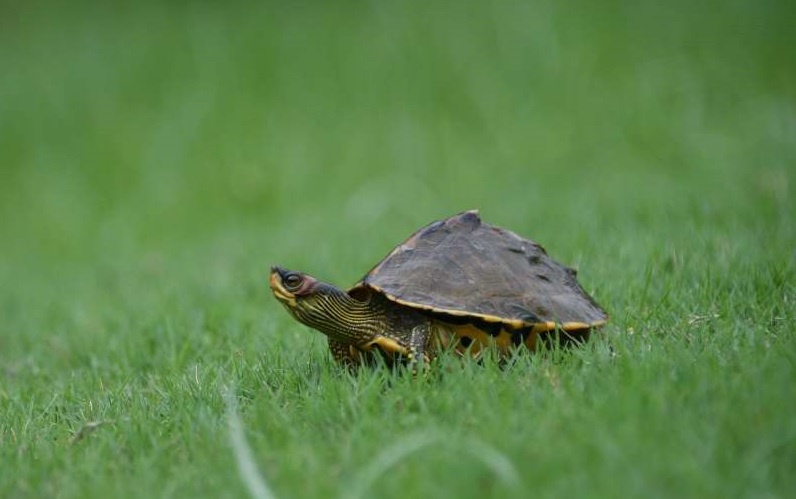
An illegal trade of tens of thousands
“In the Indo-Gangetic plains, softshell turtles are mostly targeted for meat, while black spotted turtles (having pretty looking yellow-spots) are fast disappearing from the Ganga river basin [due to the] pet trade. The scale [of poaching] is huge. We often encounter seizures involving more than 1,000 turtles, which may only be a fraction of the actual amount of trade,” said Saket Badola, who heads TRAFFIC India.
Other visually appealing species like the box turtle (from north-east India), the Indian roofed turtle and brown roofed turtle are also trafficked in large numbers to cater to the international pet trade. While the Nilssonia (Indian softshell) species is mainly poached for meat by lower income groups domestically, but it is now increasingly coming to light that these turtles are also being killed specifically to extract calipee (the leathery rim just above the lower shell,) which is used in Chinese medicines and as delicacy for soups.
“In the last six months 10,000 live turtles from 8-9 species have been confiscated from Uttar Pradesh, Bihar and West Bengal,” said Shailendra Singh, director of the Turtle Survival Alliance – India Programme. “In a seizure, you can find big numbers of turtles which can range from 7-10,000. We have had instances of seizures where 6,500 Indian flapshell turtles were caught when they were being taken for food markets.”
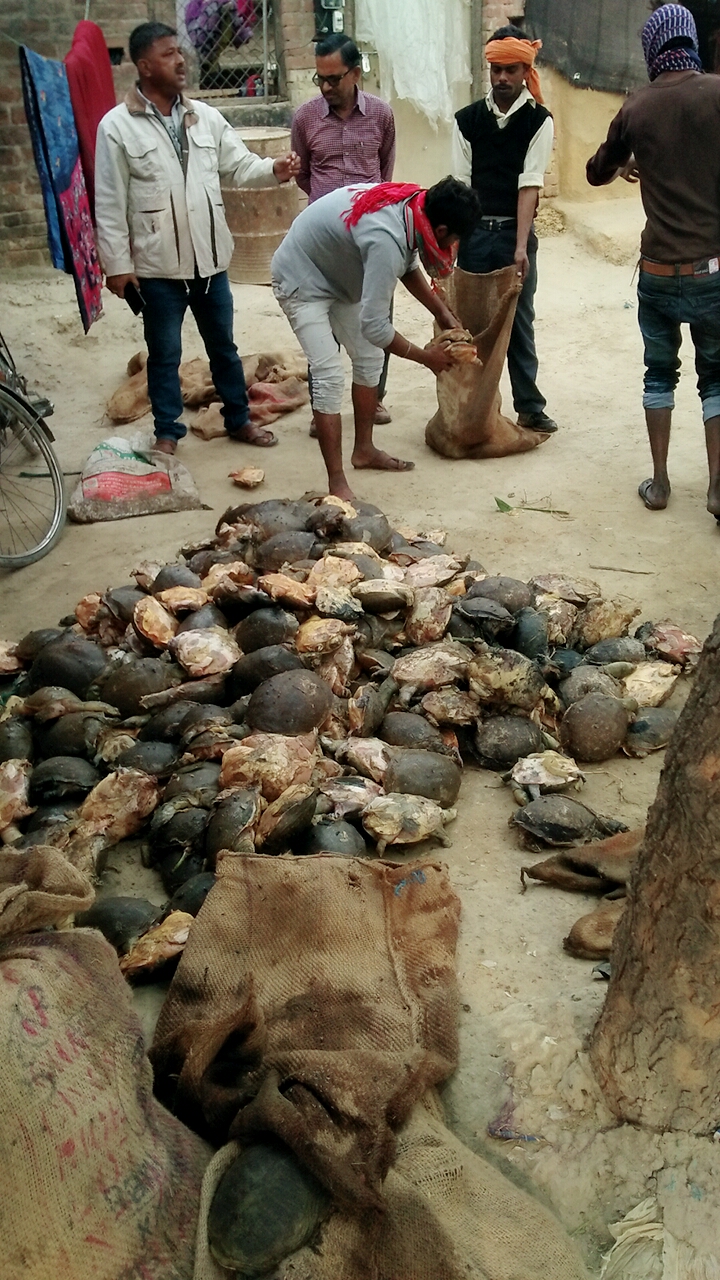
Wildlife biologist Faiyaz Khudsar is the scientist-in-charge at Yamuna Biodiversity Park in Delhi, and he witnessed first-hand systemic poaching of turtles for calipee in the Chambal National Sanctuary. The sanctuary – located at the tri-juncture of the states of Rajasthan, Madhya Pradesh and Uttar Pradesh – is named after the Chambal, one of the main tributaries of the Yamuna and hence part of Ganga drainage system.
“Once we were surveying reptiles in the riparian stretch when we were asked to stop on an island to avoid bandits. On that island, suddenly we saw one dead turtle, an nilsonnia gangetica (Indian softshell).” The local fishermen told him the turtle was being dried to be made into chips, which would be sent to different countries.
![An Indian softshell turtle (nilssonia gangetica) killed at the National Chambal Sanctuary [image by: Faiyaz Khudsar]. Underside is ripped open, showing internal organs.](https://dialogue.earth/content/uploads/2019/04/Indian-softshell-turtle-Nilssonia-gangetica-National-Chambal-Sanctuary-1.jpg)
A web of international turtle poaching
On speaking to key experts and piecing the puzzle together, a full picture of an organised trade emerges. Traders target poor fishermen in Uttarakhand, Uttar Pradesh and Bihar, who catch turtles in small numbers from rivers and wetlands from various locations. These turtles are sent to the collectors who then supply them in huge numbers to people running underground collection centres. Often trains are used to transport the turtles to West Bengal where they sort them as per the demand.
“These are not high-profile species and so the trade continues off-radar. There are so many small railway stations between Agra in Uttar Pradesh to Howrah in West Bengal where there is no screening. They ferry turtles in bulk without being detected. It is a well-oiled mechanism,” said Samir Sinha, Additional Principal Chief Conservator of Forest, Uttarakhand, who has been investigating wildlife crimes for years.
West Bengal and India’s north-eastern states are also big domestic markets where turtle flesh is consumed by lower income groups. During the annual Kali Puja festival, turtles are consumed as part of some rituals in West Bengal, Assam and Bangladesh.
Strict laws, loose implementation
These freshwater turtle species are protected under India’s 1972 Wildlife Protection Act, with most of them listed under Schedule 1, which is supposed to give them absolute protection, and sets the highest penalties for causing any harm. These species are also listed in the appendices 1 and 2 of the Convention on International Trade in Endangered Species of wild Fauna and Flora (CITES), which prohibits and regulates their international trade.
Despite these laws, people smuggle these turtles and their parts in boats or by walking across the porous borders that India shares with Nepal, Bhutan, Myanmar and Bangladesh. Due to lack of enforcement, they reach Asian markets like China, Hong Kong and Japan where they are in big demand.
![six men releasing Tricarinate hill turtle and spotted pond turtles rescued from illegal trade consignment in Sitapur [image by: Uttar Pradesh Forest Department]](https://dialogue.earth/content/uploads/2019/04/Release-of-Tricarinate-hill-turtle-and-spotted-pond-turtles-rescued-from-illegal-trade-consignment-in-Sitapur_Uttar-Pradesh-Forest-Department-1.jpg)
According to Louies, these crimes are becoming more sophisticated and traders are using social media networks for such trade. In 2017, an Indian national was arrested in Kuala Lumpur with briefcases full of 55 live black spotted turtles. He used to find clients through Facebook. An investigative report published last year by the Hague based NGO Wildlife Justice Commission showed that most turtles feeding the illegal trade came from India, along with Malaysia and Pakistan.
Radhika Bhagat, who heads the wildlife crime control division at WTI said, “These turtles are killed round the year but the trade soars in winter months particularly as these cold blooded animals are less active in cold weather and can be transported without much fuss.”
A devastated population
Due to their long lifetimes, turtles reach maturity late. Turtle poachers, admittedly, do not care about this, with the result that many turtles are caught, killed, or trafficked before they can breed, further endangering their population. For example, 40 years ago, the red crowned roofed turtle was found all across the Ganga, but today it is found only in one tributary of the Ganga river basin. “In 2017, 23 males (turtles) were caught in Agra, showing that they are being traded in spite of being highly protected in three states- Rajasthan, Madhya Pradesh and Uttar Pradesh,” said Singh.
People traditionally used to keep flapshell turtles in wells to keep them free of algae. Unfortunately much of this traditional knowledge is disappearing, and as the animals disappear too, it is hard to demonstrate because people no longer see the role that the gentle animals fulfill. Activists suggest that weaving in the role of turtles in nature in school curriculums of government schools in remote areas might help generate grassroots awareness, creating some protection for the gentle creatures.
Such is the threat of poaching that nature lover Bhuvan Chopra who knows of a pond in Delhi where 3-4 freshwater turtles still exist chooses to conceal the location. “I have seen some young boys coming there to catch fish and turtles, so we guard that area.” And for this report as well, thethirdpole.net was discouraged by experts from naming specific sites and routes the poachers use for fear that this would only help serve the criminals.

